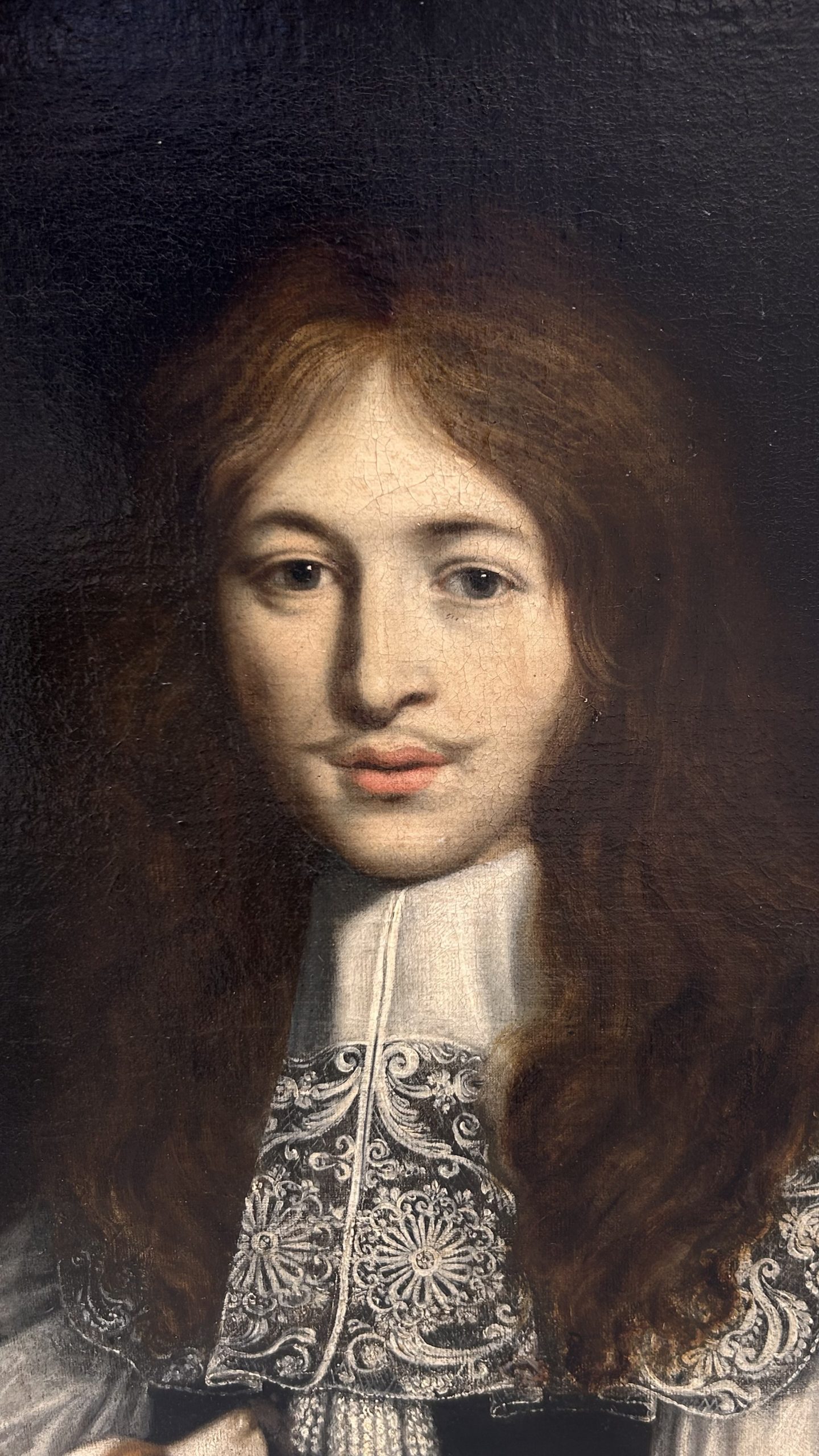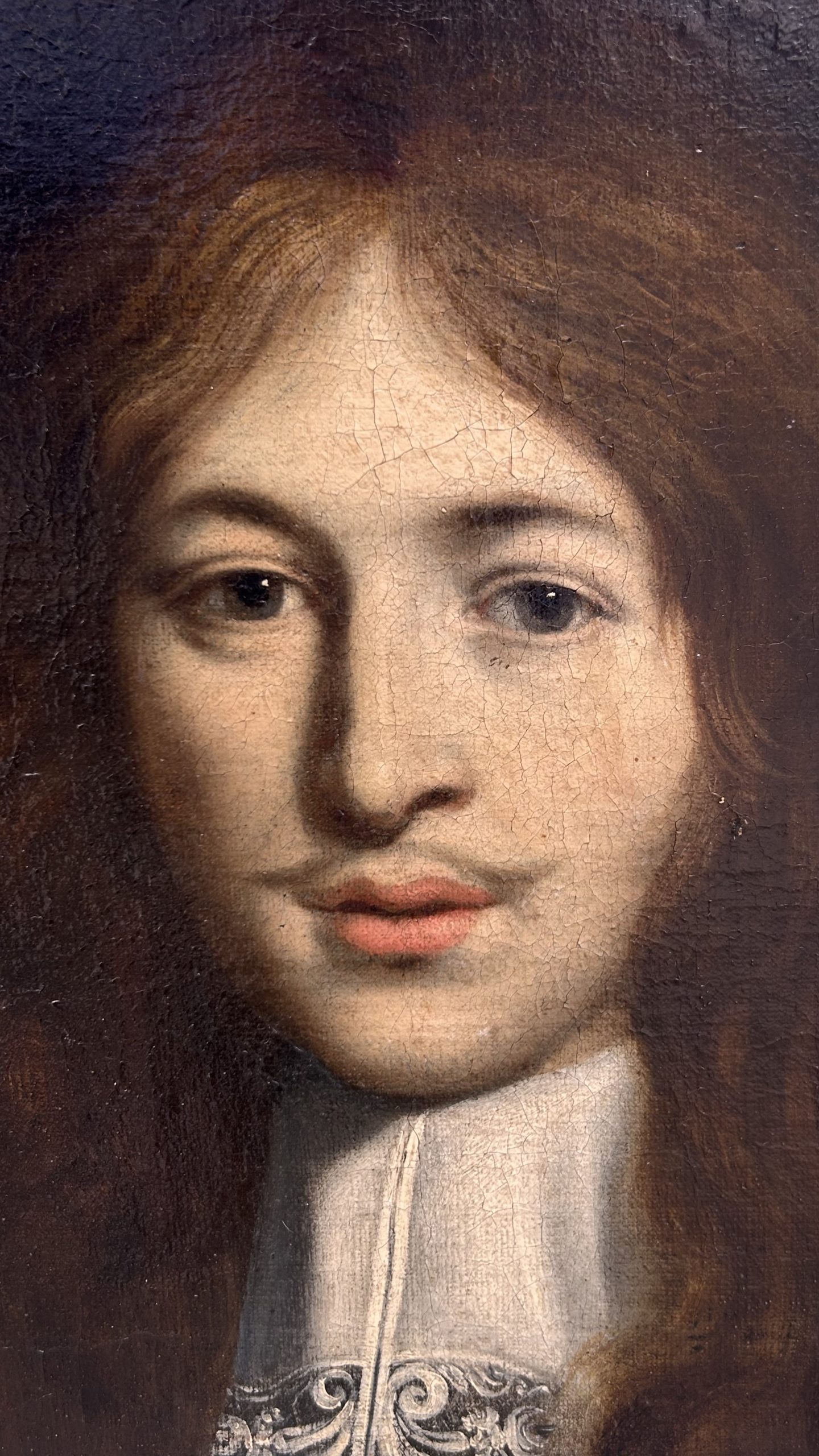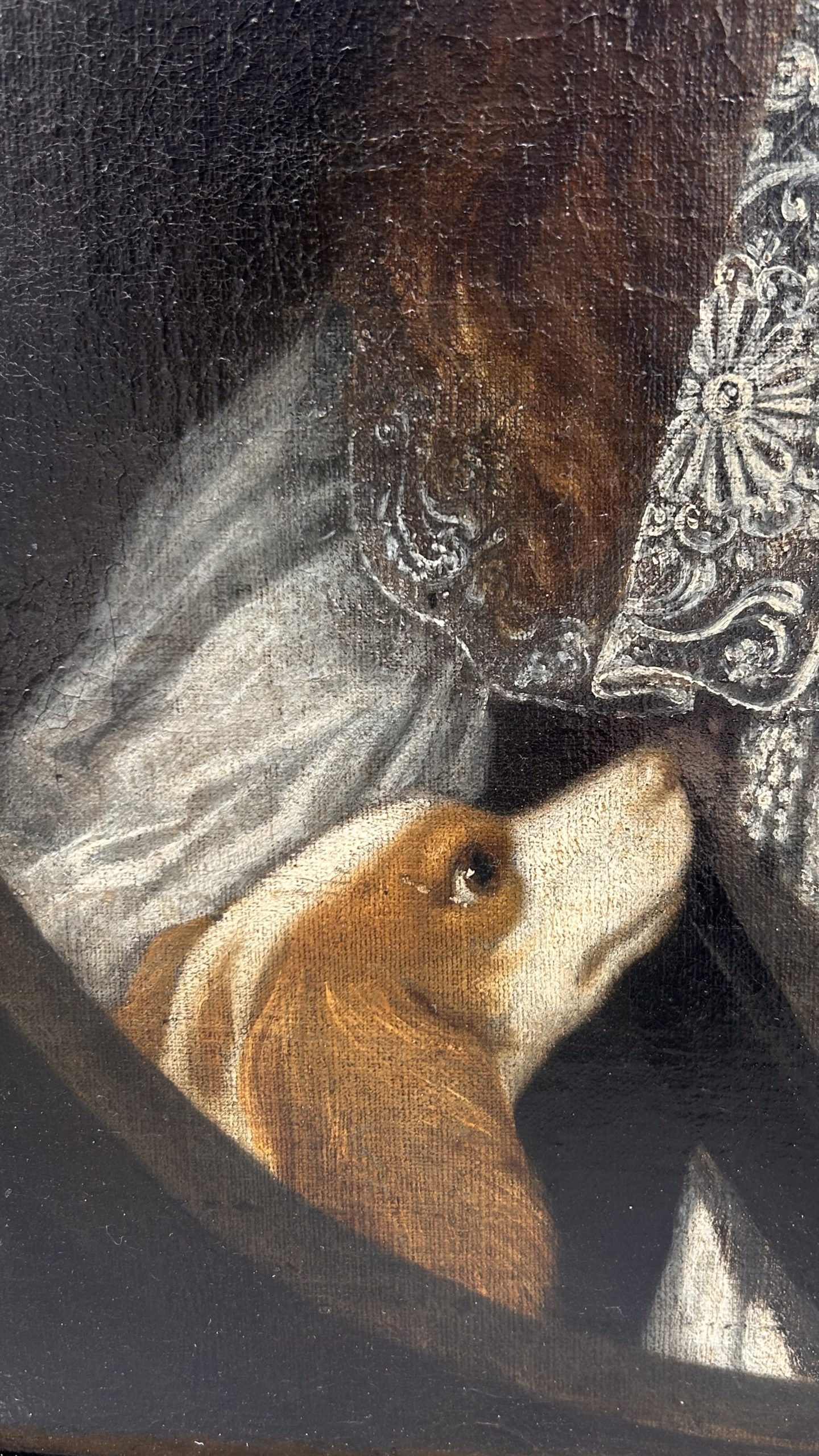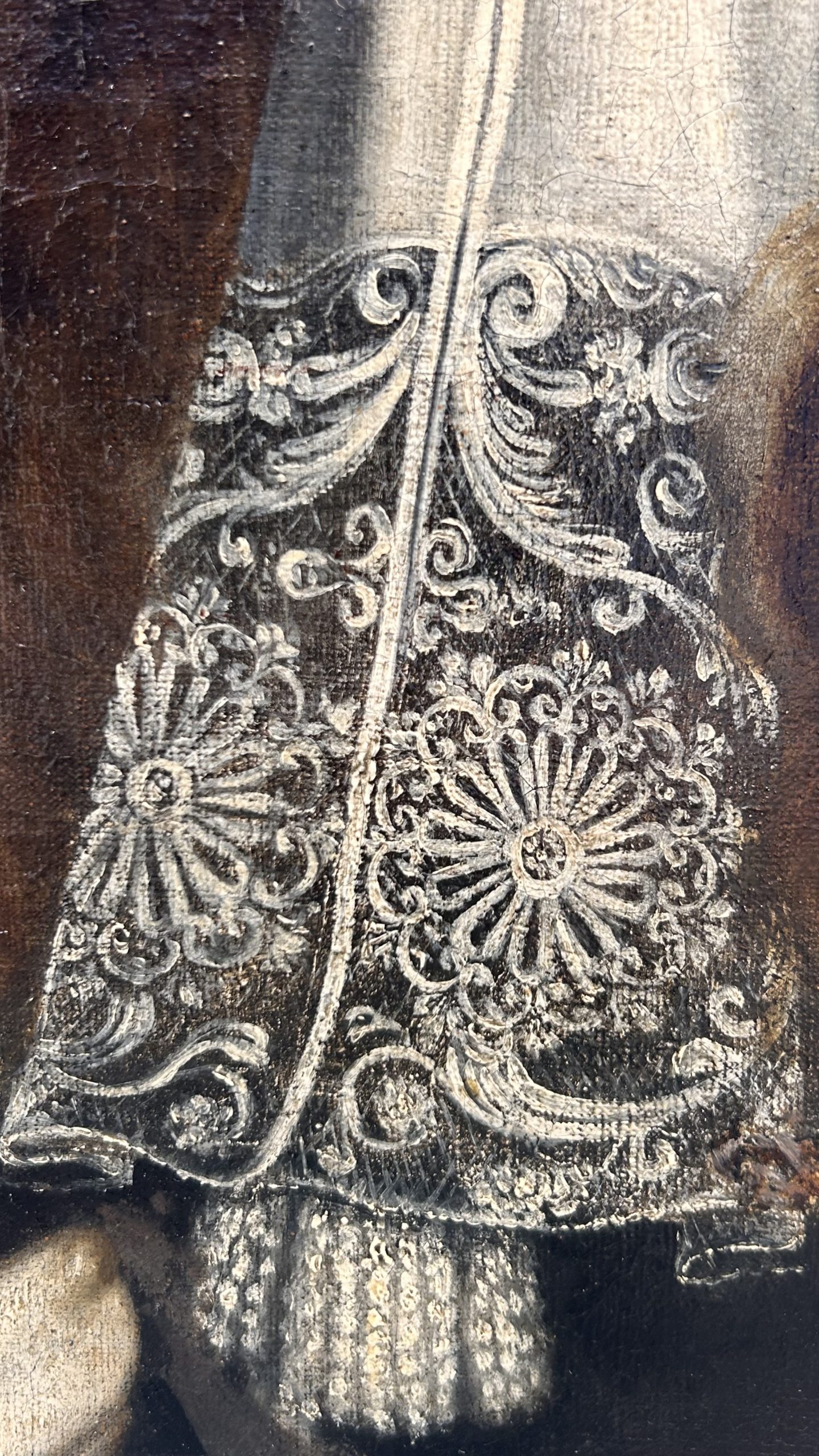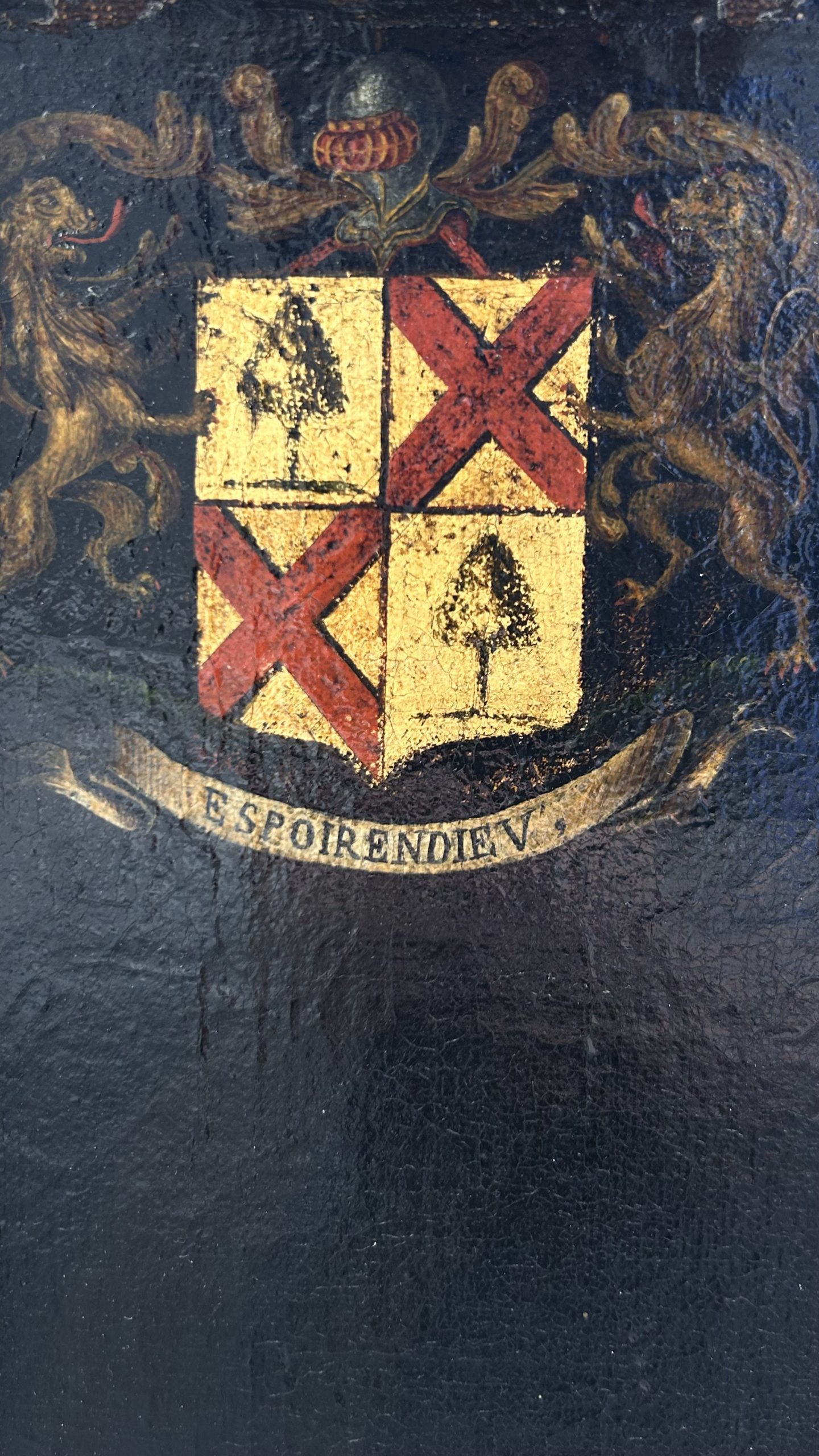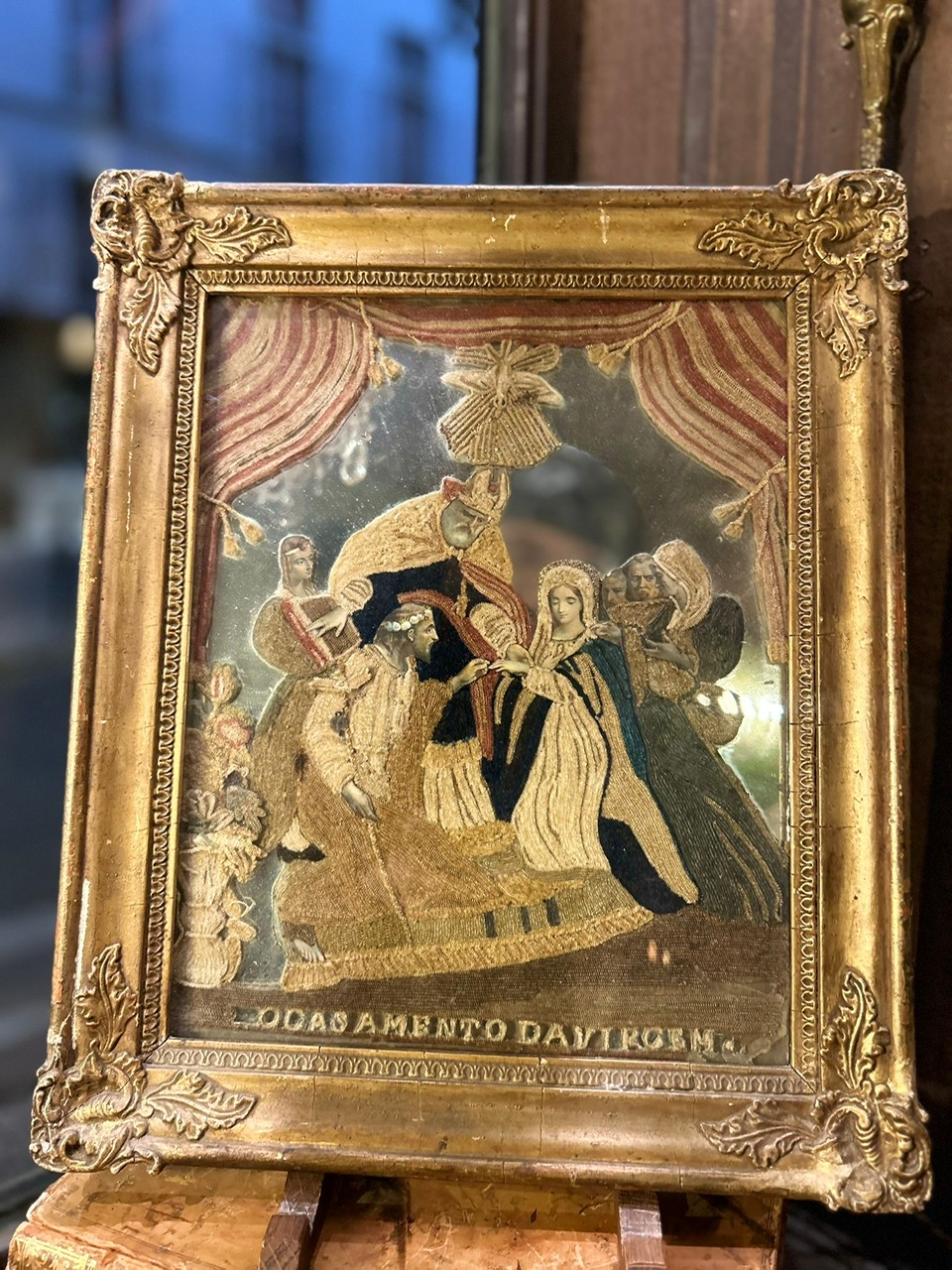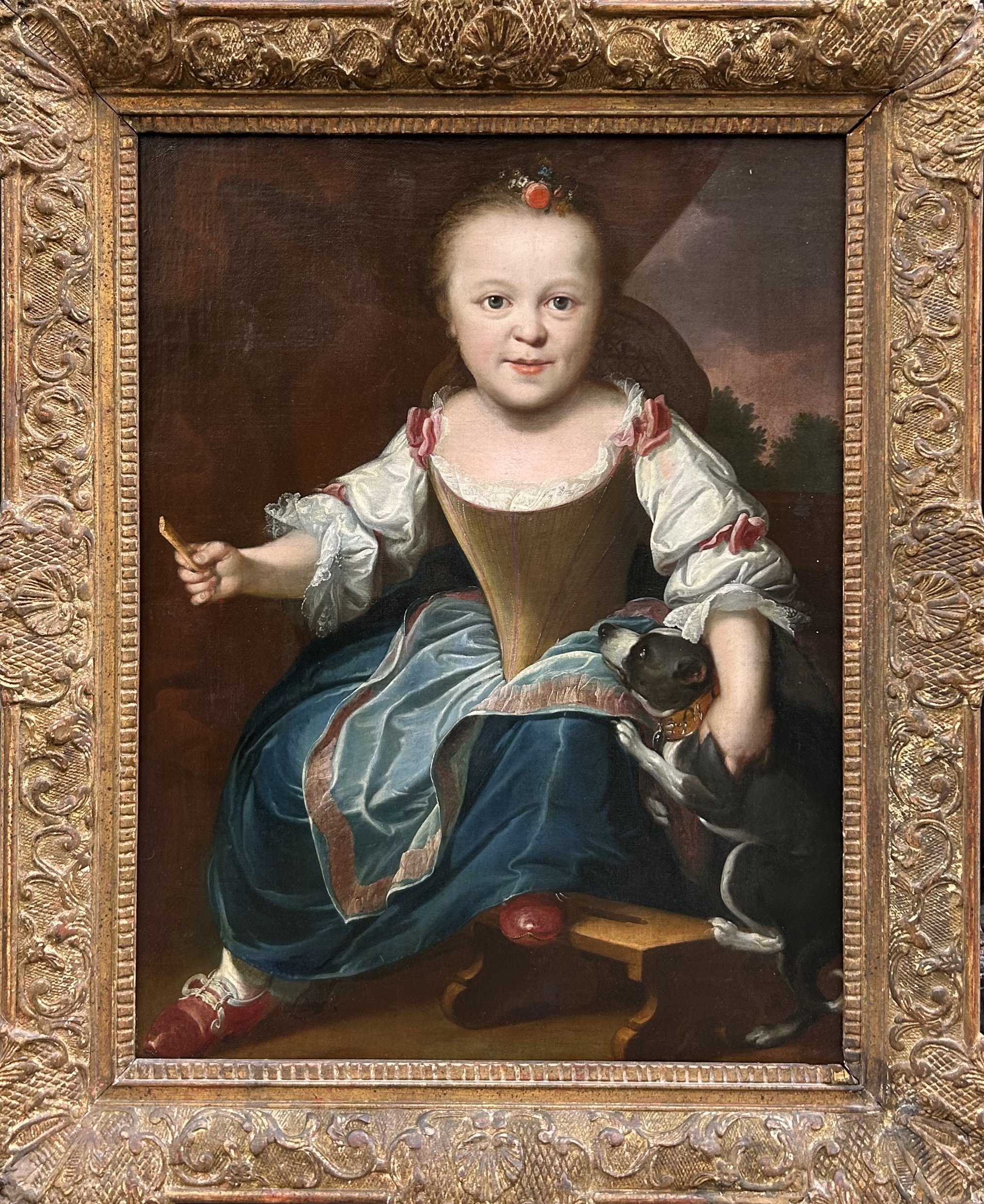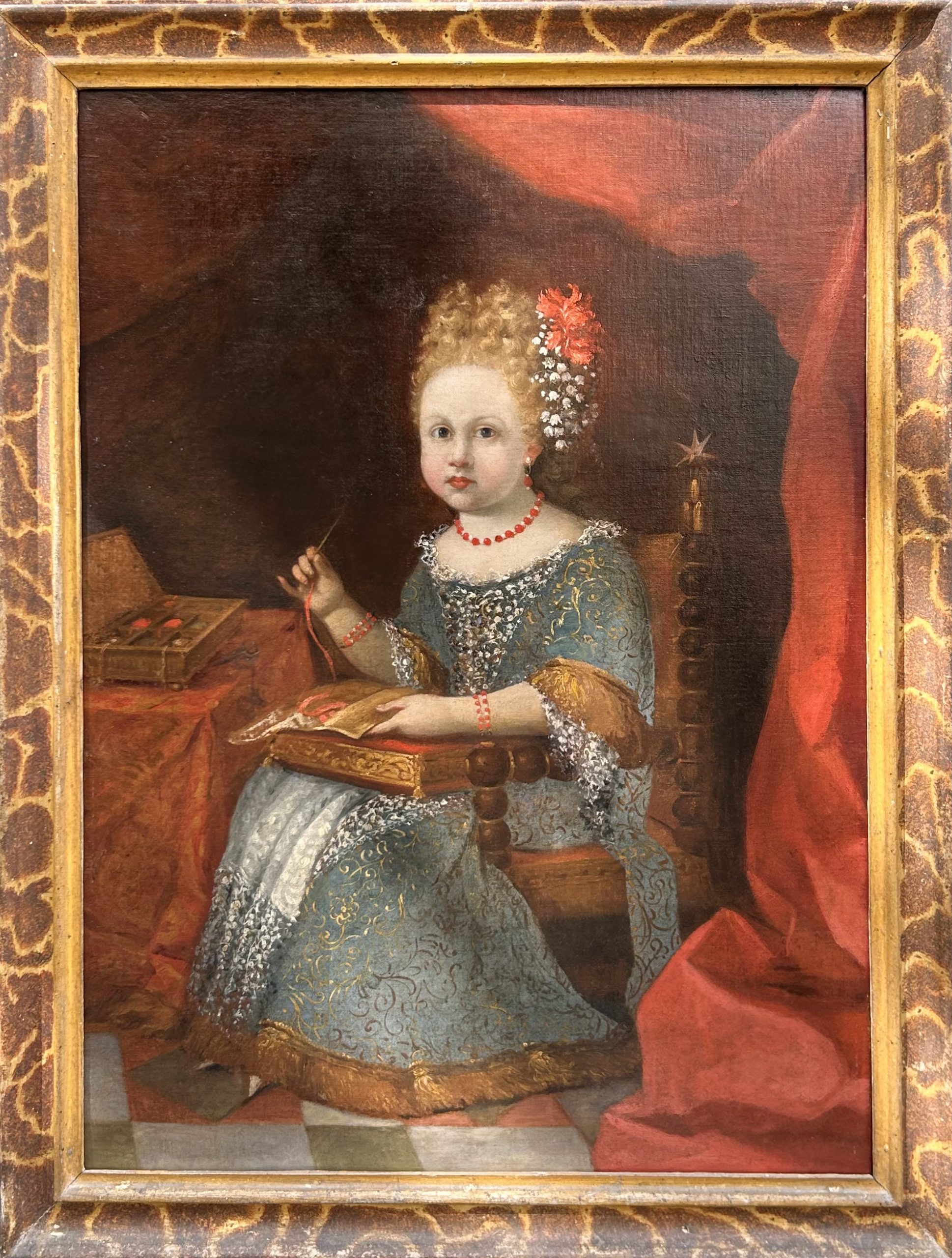Oil on canvas, “Portrait of a Nobleman with His Dog,” the coat of arms at the top left with the motto in old French “Hope in God.”
The man is dressed in the fashion of the 1650s and 1660s, with a Venetian gros point turndown collar. Lace was worn by members of the nobility, the wealthy bourgeoisie, and the high clergy, as a symbol of wealth and power, and adorned men’s costumes. The gros point turndown collar, with its raised motifs, wide foliage, and asymmetrical straps, was highly sought after at the time. Venetian lace was exported throughout Europe, particularly to France, until Colbert organized French production and persuaded Louis XIV to issue edicts prohibiting the purchase and even the wearing of imported lace. The portrait likely refers to the French court of Louis XIV in the 1650s and 1660s. While the King Charles dog breed may refer to King Charles II, King of England, Scotland and Ireland, who at that precise time was exiled in France for ten years because of the revolution in his country?
It was Charles II (1630-1685) who gave English Toy Spaniels their letters of nobility. He was so passionate about them that they were called King Charles Spaniels. The king never traveled without his dogs, which were even allowed to enter Parliament.
The coat of arms with two rampant lions, signifying courage, royalty, loyalty, and vigilance, was often used for those who defended the king or the Church with honor. The helmet with vertical grilles facing forward (for knights or certain military orders) and the motto “Hope in God” refer more to the English or Scottish nobility, perhaps to the Hope or Walmsley families, whose mottoes are similar. Mottoes in French on English or Scottish coats of arms were historically normal. French was a language of prestige, of the elite, and of refinement. It remained in use for a long time in heraldic mottoes, even after Modern English became dominant. Even when families no longer remained French-speaking, they often retained their old French motto out of respect for tradition and ancestral prestige. For example, the British royal family’s motto is “God is my right” in reference to the divine sovereignty of the king.
Is this a nobleman in the entourage of King Charles II of England?
17th century
French School?
Height: 83 cm
Width: 74 cm


